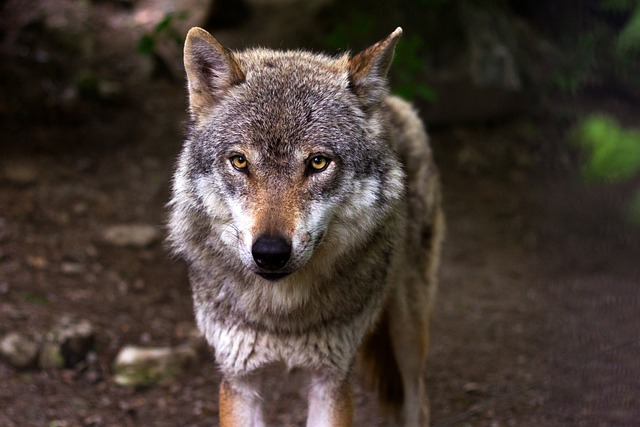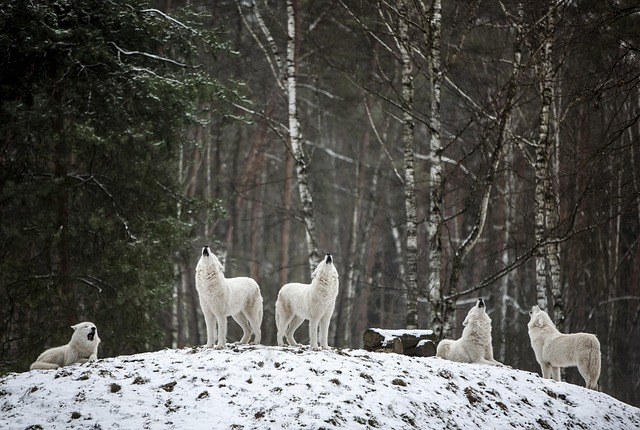For over a century, the forests of Germany were devoid of the iconic howl of the wolf. Hunted to extinction by humans in the late 1800s, the population of these apex predators had disappeared from the landscape.

However, in recent years, the howling sound has returned, signaling the remarkable resurgence of this wild species.
But yet, people are skeptical about is the wolf a protected species in Germany.
Wolves are present in Germany. After an absence of more than a century, the wolf population started to recover in Germany, thanks to conservation efforts and legal protection.
The return of these wild wolves is a positive part of the forests of Germany, and it has also gone through controversies.
Farmers and rural residents have raised concerns about the safety of their livestock and themselves, while supporters of the wolf species argue that they play a vital role in maintaining the ecological balance.
In this blog, we will explore how wolves population is growing in Germany, their struggles, and the challenges they face for their existence with humans.
Grey Wolves are Returned to Germany
After over a century, in the late 80s, a pair of wild wolves crossed the Polish border and entered Germany. In 2000, a female wolf gave birth to a pup, which was the first wolf pup born in Germany.
But in recent years, the wild wolves are not struggling to develop their population again in Germany but they are trying to strengthen their presence constantly, as a result of which their population is increasing by 25% per annum.
Grey Wolves Thriving In Germany’s Military Grounds
After the migration from the Polish border, the Canis lupus, or a gray wolf, inhabited an active German military training ground in Saxony.
Later on, the other two new wolf territories were developed in 2007, again on a military base.
The reason for inhabiting military grounds is they remain off-limits for human habitation and are an unlikely sanctuary for the wolves.
The absence of human activity in these areas has allowed the wolf population to thrive, creating a safe haven for these wild wolves to live and breed.
This unexpected development is a victory for conservationists who have worked tirelessly to protect the population while addressing the concerns of livestock farmers.
Gray Wolve’s Legal Safety In Germany
Adopting a new place and adjusting to it is not an easy task for anyone. After years of a comeback in Germany, the wolves have suffered from many unpredictable killings, most of them were occurred due to road accidents.

So far, there have been around 567 registered deaths of gray wolves in Germany. In illegal killing, around 69 wolves are hunted by the hunters. Hunters are illegally killing wolves cause they are bothering them by interfering in their hunting games.
Also, hunters are angry with wolves as, due to their presence, the deer and antelope become more alert and hard to catch.
After all these problems, the German authorities came into action and gave legal rights to the wolves. The authorities did this to stop wolf attacks and conserve wolves population in Germany.
According to new laws for wolf recovery and safety, “ wolf killing is illegal and count as a criminal act in germany. And the penalty of wolf killing also include permananent cancellation of the hunting licence, and fine can range upto fifty thousands euros, as well as five years of imprisonment.”
Federal Nature Conservation Act for Wolves in Germany.
Last year, the authorities monitored the gray wolves. As per the German Federal Agency for Nature Conservation (BfN) there are around 158 wolf packs, 27 wolf pairs, and 20 lone gray wolves, and the total number of wolves is nearly 1200.
Counting these wolves individually is impossible, and their pack size is also not fixed, as it keeps changing from 5 to 10 wolves throughout the year.
But the number of territories of theirs is well-known, so these numbers are accurate as they are based on scientific data.
According to BfN, they have space of around 700 to 1400 wolf territories in Germany.
Wolf Populations
A wolf is another wild animal, like a deer, fox, or wild boar. Their population gained in Germany after one pair crossed the Polish border and entered Germany.
Wolf populations have remarkably recovered in recent years, largely thanks to conservation efforts and legal protections.

While these apex predators were once hunted to extinction in many regions, they are now experiencing a resurgence throughout much of their native range.
This is great news for the health of the ecosystem, as wolves play a critical role in maintaining a balanced food chain and promoting biodiversity.
However, the return of wolf populations also brings challenges for humans, particularly those who work in agriculture or rural areas.
Can wolves and Livestock coexist in Germany?
The wolf population in lower saxony is increasing with time, but what is surprising is the frequency of wolf attacks on farm animals, which is 50% lesser.
In 2017, there were 159 attacks, and in 2018, there were 115 attacks on animals. This show that if proper measures have taken to protect the livestock, then wolves and farm animals can coexist.
Proper protection for livestock includes electric fencing, mobile fencing, fixed fences, and properly trained guard dogs.
Confirmation of Wolves’ Presence
On 27th April 2020, three sheep were found dead in Niederanven, indicating the sign of a predator’s attack.
To confirm that the sheep were killed by a predator, the Senckenberg Institute in Gelnhausen, Germany, did a DNA test. And the DNA results confirmed the livestock killed by the wolves, and wolves are present in Germany.
Conclusion
Wolves went extinct in Germany, but in the late 80s, a pair of wolves crossed the Polish border and reached the German military ground in Saxony to recolonize.
Then at the end of the ’90s, a female wolf gave birth to a litter of puppies, and this is how their population increased in Germany.
But the increasing population of wolves raised the concerns of the farmers and hunters. As for hunters, the wolves were interfering in their hunting, and the farm animals were in danger too.
The official authorities of Germany gave wolves legal rights and made efforts to conserve the wolf species as they introduced the best ways to protect farm animals from wolves. Don’t miss the video below.
Frequently Asked Questions
When did wolves go extinct in Germany?
The last wolf was killed in the year 1904.
How many wolves are in Germany?
According to the german federal agency for nature conservation, there are around 158 wolf packs, 27 wolf pairs, and 20 lone wolves.
What country has the most wolves?
Canada has a large population of wolves.









